Jeep Cherokee Vs Grand Cherokee: Which Jeep SUV is Right for You?

It can be argued that the original Jeep Cherokee was the first machine to market itself as a family-friendly rig with more than a dash of off-road capability. As we know, that segment now occupies a huge chunk of North American sales.
Today’s Jeep Cherokee shares much with its 1983 forebear in the same way I share a lot with Adam Levine. We’re both human, but that’s about it. The Cherokee received a comprehensive facelift for the 2019 model year. Along with a more, ahem, conventional front end, Jeep also upgraded the interior with better materials, seat upholstery and even the infotainment system. Add to that a wide selection of engines and trim levels and Jeep dealers have something to sell to just about anyone.
Just ten years after the first Cherokee appeared, Jeep unleashed the bigger Grand Cherokee on a burgeoning SUV market. That machine offered a spacious interior combined with off-road grunt, a mixture which proved to be a hit with customers. The current generation Grand has been around since 2011. And in that time, its lineup has only expanded. In the 2021 model year, the Grand Cherokee has the goods to attract a wide variety of clientele. Four different 4×4 systems, a raft of trims, and an array of engines ranging in output all the way up to 707 horsepower mean that if a shopper wants a Grand Cherokee but can’t find one they like, they’re not looking hard enough. Plus, with the new one due to make its debut soon, it seems like the right time to get some serious deals before the current WK2 generation bows out.
So you have a fairly recent facelift and an outgoing generation that is bound to fetch some mouth watering deals. But how do you cut through the marketing-speak and select the Jeep that’s right for you? As the porter said to the hotel guest who was struggling with their bags: let us help you with that.
Get a Quote on a New Jeep Cherokee or Grand CherokeeJeep Cherokee vs Grand Cherokee
Powertrains
Cherokee: A new 2.0L turbocharged four-cylinder engine joined the Cherokee’s ranks in 2019. This practical choice is rated at 270 horsepower and 295 lb-ft of torque. The 3.2L Pentastar V6 engine is still available across most of the Cherokee lineup and is not going anywhere. It produces 271 hp and 239 lb-ft of twist. Occupying the entry-level end of the spectrum is a naturally aspirated 2.4L inline-four with 180 hp and 171 lb-ft of torque under its off-road belt. Regardless of engine choice, the Cherokee comes with a nine-speed automatic transmission.
Grand Cherokee: No fewer than five different engines are available in the 2021 Jeep Grand Cherokee lineup. All of them hairy and all of them lairy, these five mills run the gamut from a sensible V6 to a fire-breathing supercharged V8. The familiar corporate 3.6L Pentastar V6 makes 286 horsepower and 255 lb-ft in this application while the 5.7L V8 Hemi, found in any number of Chrysler products, is good for 352 horses under the hood of this 2021 Grand Cherokee. Off to the left, a 250 hp 3.0L EcoDiesel V6 making a prodigious 420 lb-ft of torque is listed as an option but they may be thin on the ground. Topping the range are a 6.4L Hemi V8 and a supercharged 6.2L V8, rated at 468 and 710 horsepower, respectively. If you ever wanted to get the kids to school on time, these are the trucks for you. All Jeep Grand Cherokee engines are mated to the TorqueFlite eight-speed automatic transmission.
ALSO SEE: 2019 Jeep Cherokee Pros and Cons
Bottom Line: Jeep Grand Cherokee Trackhawk. 710 horsepower. It goes 0-60 mph in 3.5 seconds. What more do we need to say? We’re greedy, and while it’s definitely not as sensible, the Trackhawk is just too ridiculous to say no to.
ALSO SEE: Jeep Grand Cherokee Trackhawk Review
Off-Road Prowess
Cherokee: A trio of 4×4 setups greet Cherokee shoppers – Jeep Active Drive I and II, plus Jeep Active Drive Lock. The former has a fully disconnecting 4×2 mode with automatic 4×4 engagement and is optional on Latitude, Latitude Plus, and Limited models. Appending a II to that system unlocks electronic 4×4 Low as an option on Latitude Plus and Limited. Jeep Active Drive Lock, which has full-time four-wheel drive mode with an active on-demand clutch is standard on the gnarly Trailhawk. Minimum running ground clearance on that trim, by the way, is 8.7 inches. Approach and departure angles are appropriately aggressive (maximums of 29.9 and 32.2 respectively).
Grand Cherokee: Jeep takes off-roading seriously, as evidenced by the quartet of 4×4 systems available on the Grandest of Cherokees this year. Quadra-Trac I and II, Quadra-Drive II, and Quadra-Trac Active all scamper to put power down when and where it is needed the most. The full-time 4×4 systems mete power out in either a 50/50 split with the 3.6L V6 engine or on a variable scale when hooked to the 6.4L V8. The system that includes a 4×4 Low (Lock) setting is optional on the gas and diesel V6 machines, plus GCs with the Hemi-powered 5.7L V8. Mighty 707-hp Trackhawk models are fitted with a single-speed full-time system. Ground clearance ranges from 8.1 inches in the performance-focused Trackhawk to an impressive 10.8 inches in Grand Cherokees with the air suspension, standard on the off-road-focused Trailhawk and two other luxury trims, jacked to Off-Road position #2.
Bottom Line: It is unlikely either of these Jeeps will leave you stranded when the going gets rough, especially with the focused Trailhawk variants. Grand Cherokee does have a couple of extra options for delivering power to road, primarily what is essentially an all-wheel-drive system on the brutal Trackhawk.
ALSO SEE: Jeep Cherokee vs Compass: Which Crossover is Right For You?
Towing
Cherokee: With the 3.2L Pentastar V6 under its hood, the Cherokee has a towing capability of 4,500 pounds, a measure stout enough to haul weekend toys or a family-sized camper. An optional trailer tow group, only available with the V6 and new 2.0L turbo engines, adds a transmission cooler, Class III hitch, proper wiring, and a full-sized spare tire.
Grand Cherokee: Properly equipped, a Grand Cherokee can tow a maximum of 7,200 lbs. That’s pickup truck territory. A specialized Trailer Tow group is available on every single trim level and standard on Overland and Summit trims equipped with 4×4 plus the too-cool Trailhawk. This group installs an air-lift suspension with load-leveling in the rear, heavy duty engine cooling, a Class IV trailer hitch, plus the necessary 4/7 pin wiring harness.
Bottom Line: While 4,500 lbs is nothing to sneeze at, the robust 7,200 lb rating of the Hemi-powered 2021 Jeep Grand Cherokee can’t be ignored. Even the less-powerful V6 versions are capable of hauling 6,200 lbs when equipped with the optional package described above. If the ability to tow a boat or something large is something you need, the Grand Cherokee should be considered over its smaller sibling.
Technology
Cherokee: Every Cherokee is equipped with goodies like Apple CarPlay and Android Auto. The smallest infotainment touchscreen available is a 7.0-inch system, an impressive inclusion on base models. A customizable main menu bar on the touchscreen is available, allowing drivers to customize their in-car experience. The available ParkSense Parallel/Perpendicular Park Assist System is displayed in the center of the gauge cluster and operated with buttons on the steering wheel and the shifter. Its graphic walks drivers through the steps necessary to utilize the park assist system.
Grand Cherokee: The large 8.4-inch Uconnect system described above is standard on every model save the base Laredo trim. Snazzy 19-speaker Harman/Kardon sound systems appear about halfway up the food chain, along with safety kit like adaptive cruise control and lane keeping. Self-park shoes up here, too. Powerful SRT and Trackhawk models feature a quintet of driving modes, each of which metes out power appropriately given driving conditions ranging from Sport to Snow.
Bottom Line: These fraternal brothers are evenly matched in terms of electronic toys, both on the practical and recreational fronts. UConnect is also one of the best infotainment systems out there.
Cabin Space
Cherokee: Without a sunroof, the dimensionally smaller Cherokee shares front row headroom measurements with its bigger GC brother, about 40 inches. Adding that glass pane above the driver and passenger will rob them of space, leaving 37.9 inches of headroom. Legroom is, perhaps surprisingly, is approximately 1.5 inches better than the Grand Cherokee, described below.
Grand Cherokee: This two-row SUV can accommodate five people, placing it in league with rigs like the Honda Pilot and Nissan Murano – which are admittedly front-wheel drive based machines compared to the rear-drive architecture of this Grand Cherokee. Front and rear headroom is close to 40 inches, competitive for this segment. Passengers in the front row of seats will enjoy 40.3 inches of legroom compared to 38.6 inches of the stuff allotted to those seated in the second row. Total passenger volume is said to be 105.4 cu ft.
Bottom Line: If good things come in small packages, then the Cherokee must be very good, indeed. Despite pressing a smaller footprint into the pavement and casting a smaller shadow, the Cherokee has more measured interior space for passengers but note that it is slightly narrower in the cabin overall. Blame (or credit) its front-wheel drive bones, which make the most out of the space thanks to a more compact driveline system. This is one of the few cases where a customer gets more for less.
ALSO SEE: Honda Passport vs Pilot: Which Honda SUV Suits Your Lifestyle Better?
Cargo Capacity
Cherokee: When the rear seats are upright, there is a total of 25.8 cubic feet of storage space, not counting the 0.7 cu-ft tucked away when one lowers the cargo floor slightly with a clever repositioning of the spare tire cover. Rear seats folded, 54.7 cubes reveals itself. Its liftover height, the amount of distance it takes to lift an object from the ground into the back of the Cherokee, is 30.9 inches for a 4×4 model.
Grand Cherokee: In the cargo area behind its second row of seats, a total of 36.3 cubic feet of space is available for hockey bags or Costco runs or whatever else your family needs to haul about. Folding away that rear bench, and reducing the Grand Cherokee to a two-seater, opens up a vast 68.3 cubes.
Bottom Line: To paraphrase a helpful carpentry saying: measure twice, buy once. If the not insignificant cargo capacity of the Cherokee is enough for your lifestyle activities, there is a strong case to be made for that model, especially since its passenger compartment offers slightly more legroom for the vertically gifted.
Fuel Economy
Cherokee: Despite its rugged off-road image, two-wheel drive versions of the Cherokee can exceed the magical 30 mpg mark during highway driving. That same machine should return about 23 mpg around town. The type of 4×4 system plays a role in Cherokee fuel economy, with Active Drive I rigs good for an estimated 21 mpg in town and 29 on the highway. Active Drive II Cherokees will see around 20 mpg in city driving and 27 mpg during a highway slog. The gnarliest examples of this model, equipped with Active Drive Lock, get an equal 20 mpg around town but fall to 26 mpg in highway situations.
Grand Cherokee: The EPA rates 3.6L V6 equipped GCs with a 4×2 drivetrain at 19 mpg in city driving and 26 mpg on the highway. Adding 4×4 deducts 1 mpg from those numbers. The 5.7L Hemi V8 4×4 can only manage 14 mpg in town but ekes out 22 mpg under steady-state highway cruising. An optional and enormous 6.4L V8 engine doesn’t do much better than 13 mpg in the city and a hair under 20 mpg on the highway. Perhaps unsurprisingly, the 6.2L Supercharged V8 (y’know, the one that makes 707 horsepower) struggles to crack 10 mpg under the rigors of start-and-stop commuting. Highway figures are little better at an estimated 17 mpg. The diesel is good for 22 mpg in the city and 30 mpg out on the highway.
ALSO SEE: Ford Edge vs Explorer: Which SUV is Right for You?
Bottom Line: It’s no surprise that the smaller and lighter vehicle wins this round. Fuel economy is often dictated by weight and aerodynamics, meaning the Cherokee has an advantage in any fuel economy test between these two machines.
Style
Cherokee: The Jeep Cherokee received a comprehensive upgrade in 2019 and still manages to look rather fresh. It looks more Jeep like than the previous generation. A lightweight hood peeps out over a pair of available LED headlamps that bookend a traditional Jeep grille. Engineers recognized the need (perceived or otherwise) for a Jeep to have an aggressive wheel to body proportion so their new Jeep doesn’t appear as if it has piano wheels on each corner. Jeep, naturally, was happy to oblige — particularly on the Trailhawk, which features a set of aggressive 17-inch all-terrain rubber.
Grand Cherokee: Grand Cherokee’s exterior design is complete with available bi-xenon headlamps and definitely provides a premium look on high-spec trims. SRT and Trackhawk models feature an aggressive yet functional exterior design that optimizes airflow and cooling duties. The headlamps on the Trackhawk model also feature a unique Gloss Black background to accent their jewel-like appearance.
Bottom Line: It’s easy to tell these two are brothers. With their similar lighting features and signature seven-slat Jeep grille, both of these SUV cut a handsome figure. Forced to choose, the larger Grand Cherokee looks slightly better to these jaundiced eyes, thanks to extra real estate afforded by an overall larger size. In particular, the sporty Trackhawk features a menacing stance and deep front air dam. Its enormous wheels and dual exhaust tips appeal to this extroverted author.
Pricing
Cherokee: Relatively newer of the two, the Cherokee has a starting price of $28,050 (incl. dest.) for a two-wheel drive Latitude model. As with many other Jeeps, adding four-wheel drive is a $1,500 proposition. The price might seem steep for a FWD model but Jeep always has discounts and deals on most of its lineup. So you’re looking at a starting net price of under $25,000 for the base Latitude model.
Many dealer lots will be lined with popular Altitude and Limited trims, examples of which hover around the $30,000 price bracket after discounts. Trailhawk, the only trim that comes standard with four-wheel drive, should have the final price under $34,000 after deals. The High Altitude is currently the most expensive Jeep Cherokee and retails for $34,230 for the FWD model.
Grand Cherokee: If there was a competition for which vehicle has the largest pricing spread, the 2019 Jeep Grand Cherokee would surely be a contender. Entry-level 4×2 Laredo models start at $32,465 (incl. destination) after discount with four-wheel drive being a $2,300 option. At the complete opposite end of the spectrum, a 707-horsepower Trackhawk model rings the bell at an eye-watering $89,410. And obviously, there are no deals on the flagship GC. Somewhere in the middle, an array of off-road focused trims like the Trailhawk and luxury-focused trims like the Limited X are priced in the mid-$40,000 range.
Bottom Line: Compared to other machines in the Jeep stable, the entry-level Cherokee is a well-priced rig that stickers lower than some smaller vehicles in its own family. It is predictably cheaper on average than the Grand Cherokee, given its smaller size and generally less-powerful engines. However, for customers seeking loads of stretch-em-out space paired with a fuel-efficient V6, the Grand Cherokee Laredo is hard to beat.
The Verdict: Jeep Cherokee vs Grand Cherokee
The 2019 update repaired one of the major faults befalling the previous-generation Cherokee which bore a face only a mother could slug. Unless one absolutely needs the extra space and room provided by the Grand Cherokee’s additional size, the Cherokee itself should make a sensible addition to many households who seek a handsome 4×4 that’s able to haul the family but not pack up when the winter work commute turns foul.

Living in rural Canada, Matthew has immersed himself in car culture for over 30 years and relishes the thought of a good road trip. A certified gearhead, he enjoys sharing his excitement about cars and is very pleased to contribute at AutoGuide. Matthew is a member of Automotive Journalists Association of Canada (AJAC).
More by Matthew Guy



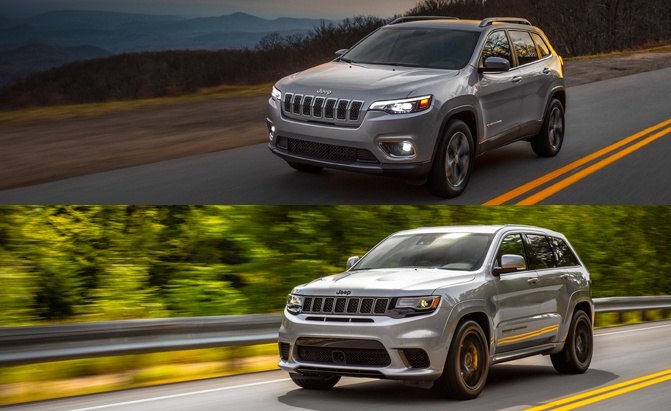































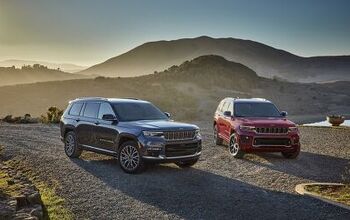


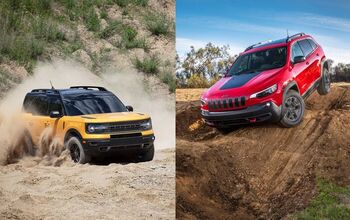
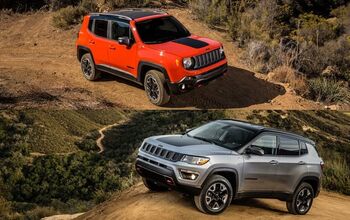
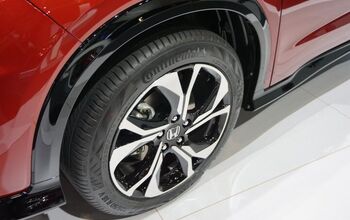


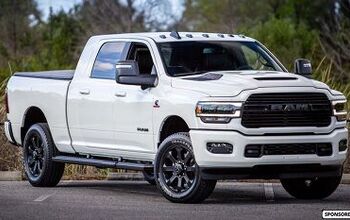






Comments
Join the conversation